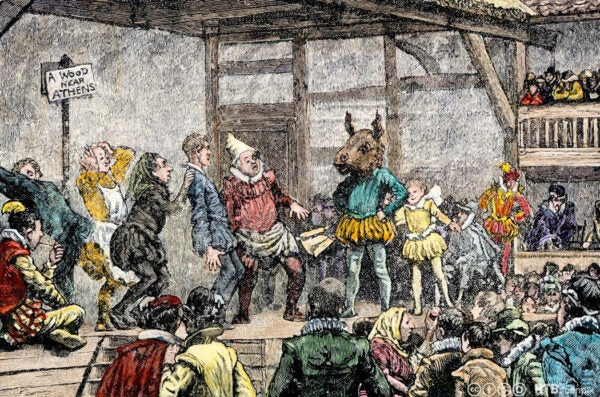Annual religious events around the world call for mass gatherings, some solemn and pious, others exultant, many drawing participants from multiple countries. They can lead to injury, infection, and on-site or off-site death. This grim reality has inspired a new branch of health care: mass gathering medicine.
Nick Hopkins and Stephen Reicher, leading figures in this growing field, and others have found that mass gatherings have many common features. One set of common features consists of practical and logistical hazards (such as stampedes); another set involves the fact that our natural inclination to avoid others (caution and repulsion), experienced when we find ourselves shoulder-to-shoulder with many other people, tends to disappear in mass gatherings.
Audio brought to you by curio.io
Why do we tend to drop our typical strong reaction to being surrounded by strangers when we want to be where we are? Hopkins and Reicher found that people in psychological crowds—of which mass gatherings are an example—behave quite differently from physical crowds, e.g., shoppers in a large market. In the former, the sense of self shifts, expands.
Disgust, most importantly and most typically, arises in the presence of members of an ostensible out-group, leading us to, for instance, suspect or refuse their food. In contrast, people in a mass gathering create a new in-group, in effect, because they feel united in a common devotion—be it worshipping a saint at a pilgrimage site or a rock group giving a concert. The pseudo-in-group could very well consist of a diverse range of people who would not otherwise see themselves as similar. Ecstatic in the mass gathering, with music or prayer, they might share food, drink, or drugs; they also might become physically intimate in some way with these total strangers. Removed from quotidian conditions, they are strangers no longer. When the perception of strangeness disappears under a mass gathering’s in-group designation, common disgust responses also disappear.
Weekly Newsletter
As anyone who has lived through the COVID-19 pandemic knows by now, crowding facilitates transmission. Mass gatherings raise the risk of viral infection qualitatively as well as quantitatively. The greatest rates have been found to exist in mass gatherings like indoor parties and workplaces. Although people working side-by-side in a meatpacking plant have almost nothing in common with masses of the faithful at a shrine, their in-group mindset, combined with physical factors (low temperature, poor ventilation, inadequate masking), may explain the high number of workplace-related infections and deaths we have seen in many countries.
We are social animals who value amiability, cooperation, and trust. Yet certain circumstances do call for a little bit of standoffishness instead of unquestioning camaraderie.
Unfortunately, human beings are not known for moderation—particularly where survival is concerned. And the physiology and psychology of the disgust response is no exception, which is to say that the response is usually immoderate. Early selection pressure favored those who erred on the side of caution when it came to sampling new foodstuffs or to avoiding possible sources of contagion. Overreaction, at least occasionally, is inevitable.
One of the riskiest things a person can choose to do is to eat or drink something. This act of putting a solid or liquid into the mouth and swallowing, literally incorporating it, creates multiple opportunities for disease or injury. Disgust evolved to minimize the chance of taking in harmful substances of plant, animal, or mineral origin. Animals use vision, olfaction, and other senses to correlate environmental features with the likelihood of poisons, parasites, or pathogens.
While numerous species, from mammals to fish, have been found to express disgust, animals with varied diets (i.e., omnivores), arguably need it the most. And no other omnivore has quite the global range of habitats—hence the potential food choices—as Homo sapiens. (Exceptions might be Rattus norvegicus and R. rattus—but they, too, are extremely discriminating, and thus notoriously hard to poison.) For the omnivore, the world appears as both an embarrassment of riches, and a landscape pitted with booby traps. Nature has therefore gifted omnivores with two seemingly contradictory instincts. Neophilia, the drive to try new things, is necessary for obtaining sufficient calories when familiar-and-safe foods are in low supply. Neophobia is the reluctance or refusal to eat anything unknown, which could harbor pathogens (flesh of any kind) or toxins (e.g., puffer fish, rhubarb leaves, toadstools). Reconciling these two drives constitutes the Omnivore’s Dilemma, in which disgust plays a key role.
At the dinner table, disgust unequivocally expressed by another diner, via the “disgust face,” can spare you the unpleasant task of taste-testing some item on the menu yourself (it can also save your life). This cooperative behavior may be the top reason people all over the world prefer to dine with others, and why mealtimes hold such personal and societal significance, far beyond the sharing and consumption of nutrients.
When some mistakes can only be made only once (e.g., consuming mushroom toxins), and since children are especially vulnerable, the need to protect the uninitiated becomes paramount. The value of culture cannot be overstated: customs, recipes, preparation techniques (e.g., the process for removing cyanide from cassava, a staple food in many tropical countries), traditions, feast days, rituals, and taboos. Exploring innumerable edible possibilities, then passing along what we learn to others, has been a part of our life strategy for millennia. In short, the meme (culture) came to complement the gene (nature).

Taboos—religious or secular—have been excellent additions to the cultural toolbox, reducing the agony of decision making. The anthropologist Marvin Harris said they “are culturally selected for their ability to overcome the ambiguity and ambivalence generated by the complex systemic relationships in which foodways are embedded. The voice of God dispels doubt.”
It is easy to see how we can transfer a classification system from our food life to our moral sensibilities. Conceptualizations of food often go hand-in-hand with ideas of purity; it doesn’t take much effort to label as impure a person who is violating a taboo. In fact, it could be extremely difficult to resist forming this association.
Yet discrimination against others is not restricted to food taboos. Many other factors, as Megan Oaten and her colleagues explain in their article, “Disease avoidance as a functional basis for stigmatization,” can elicit disgust. These include such markers of apparent ill health as odd gait, extreme thinness, skin abnormalities, and asymmetrical features.
Whether you avoid someone coughing, or swipe left on a dating-app photo of a person with acne, you engage the same ancient adaptation thought to reduce contact with disease. Since the cellular immune system can fail (and even at its best, requires tremendous outlays of energy and nutrients), an ounce of prevention is worth a pound of cure. Disgust is often called the behavioral immune system (BIS) for its role in reducing or eliminating the need to call on our remarkable cellular defenses.
Unlike the avoidance of food or feces, however, a negative reaction to an “unhealthy” human being has psychosocial and moral ramifications—sometimes with no due cause whatsoever. In a major paper on the subject, “Implications of the behavioural immune system for social behaviour and human health in the modern world,” Mark Schaller and his colleagues explore the ways these otherwise useful adaptations mismatch with aspects of modern life, because they evolved under very different ecological conditions. We live much longer than we did even a century ago, and that is largely thanks to advances in public health.
BIS manifests as two strategies. The reactive one involves disgust and rejection. The other is proactive, consisting of cultural practices and guidelines (such as rituals and taboos), which require degrees of tribal conformity. Taken together, these strategies have served us well over millennia, but in the modern world the cost-benefit analysis tips more into cost, such as the harsh demarcation of in- and out-groups, and the retention of harmful stereotypes. By continuing to err on the side of caution, due to once-adaptive hasty conclusions, we exclude people unfairly. In addition to disease-related signals, non-medical signals, such as homosexuality and other behaviors that contravene traditional ideas of the family, exotic customs, clothing, and cuisine, can elicit disgust and lead to prejudicial behaviors.
Of all the non-medical signals, only food has a verifiable connection to potential disease (compounded by universally significant symbolic value). Perhaps that is why food disgust is particularly strong. We tend to look at new foods, such as those introduced by immigrants or encountered in foreign travel, with degrees of suspicion or outright repulsion. This response qualifies as a kind of culture shock; as such, it can ease up over time, given adequate acclimation and proof of safety. In certain societies, however, some kinds of foods are permanently off the menu, such as insects, horses, or cows, although they are valued in others.
Diet tends to pigeonhole individuals, and casts doubt on their in-group status, even if other features of their lives “measure up.” Knowing this, presidential candidates in the US make a habit of setting up photo ops of themselves at barbeques and other “regular guy” feasts, as a not-so-subtle plea to voters to regard them as part of the masses and not members of the elite, the class that typically runs for office.
We expect a similar maneuver from new immigrants. They are, to put it mildly, encouraged to fit into the American cultural milieu as quickly as possible, e.g., by learning to eat recognizably American food alongside neighbors and coworkers, and replacing any markedly foreign clothing with styles they see at the local mall. The famous American “melting pot” works to make a diverse populace live in relative day-to-day harmony. Yet next door in Canada, diversity is (officially, at least) embraced and fostered as part of the cultural mosaic.
In a highly social, omnivorous species like ours, there are many ways to reconcile larger, cultural differences, to promote tolerance, and to find common ground—in any gathering size. On occasion, culture and evolution can agree on them, encouraging conformity through taboos. Sometimes there is a mismatch, and excessive disgust turns into moral judgment directed against members of an out-group. The fact that inter-group strife seems to be a fact of life around the world, despite millennia of religious and non-religious moral strictures, suggests that there are multiple strata to this interplay of gene and meme.
Support JSTOR Daily! Join our new membership program on Patreon today.







